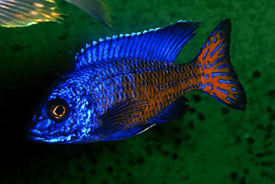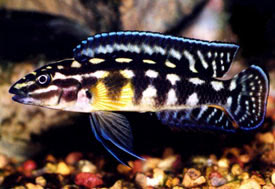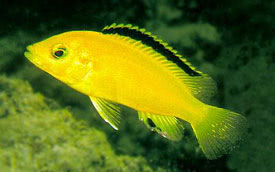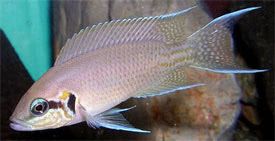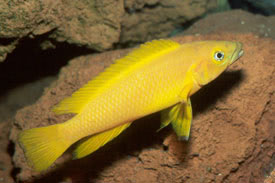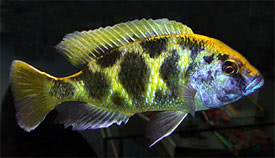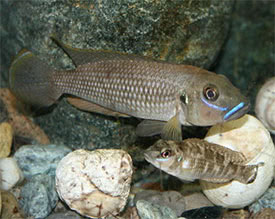
 Magyarul / Hungarian
Magyarul / Hungarian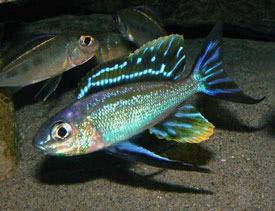
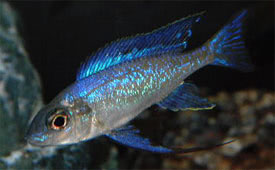
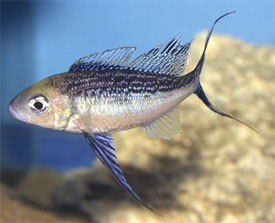
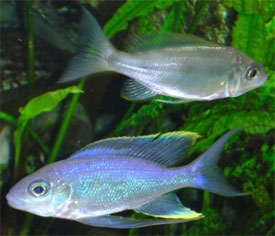
- Scientific name: Cyathopharynx furcifer
- Synonyms: Paratilapia thomasi, Hemichromis thomasi, Pelmatochromis thomasi
- Common name: Furcifer
- Group: Cichlids
- Habitat: Africa; Lake Tanganyika
- Size: 20 cm
- Biotope: It inhabits the sandy shore area or the transition zone from sandy to rocky littoral zone.
- Social behavior: Territorial, spawning pits are energetically defended against conspecifics; otherwise the animals are not particularly aggressive.
- Diet: Omnivorous, in nature, microorganisms and zooplankton are eaten. Once the animals are accustomed to the aquarium, all types of foods, from living to flake food, are accepted.
- Breeding: Quite easy
- Tank: Minimum 500 litres.
- Population: 10-12 fish for 1000 litres
- Decoration: Maintain C. furcifer in a tank that is as roomy as possible. Provide a bottom of thick sand; put rockwork riddled with caves and niches in the background; some flat stones; vegetation can be waived.
- Temperature: 25-26°C
- pH: 8-9
- Hardness: 8-25 NK°
- Lifespan: 5-8 years
Description: The species digs in the sand for food. Specialized ovophile mouthbooder. At breeding the male builds a crater shaped pit (diameter 25-30 cm) in the sand. If a sufficently large sandy area is not avaiable, it transports sand to a horizontal stone until a bowl-like nest is made.After extensive courtship, the female deposits one or two eggs into the pit and then takes them into her mouth. Now the female snaps at the spade-shaped ends of the male's vental fins. The sperm enters her mouth and fertilizes the eggs in this manner. This procedure is repeated until the female has deposited the up to 25 eggs. Hatching period is about 3 weeks at 26 °C; the young are then released for the first time from the mother's mouth. Feed the young with Artemia nauplii.



